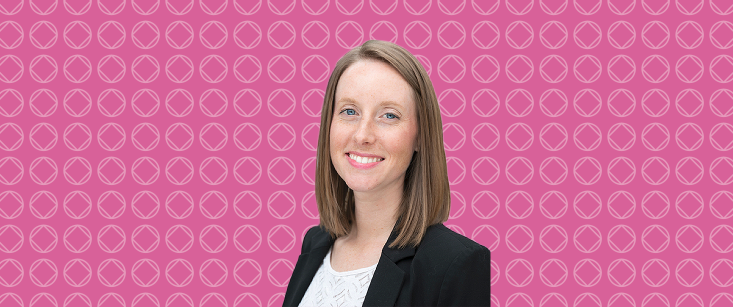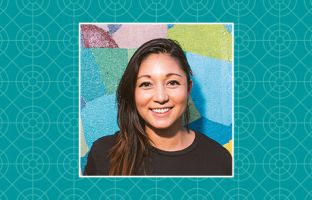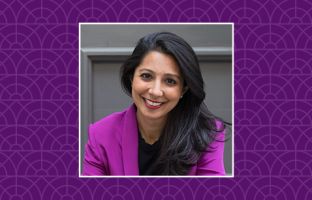You started in engineering and entrepreneurship. What drew you toward health care innovation and women’s health?
I’ve always known I wanted a career that would help people. At first, I thought that meant becoming a doctor, but after one semester in undergrad of organic chemistry, I realized I didn’t love medicine enough to commit to the long training. What I did love was my introduction to mechanical engineering. I eventually pivoted to mechanical and biomedical engineering, realizing I could still make a difference—just not by becoming a doctor, but by designing the tools they rely on.
Early in my career, I worked on advanced cardiovascular devices that were highly technical tools that allowed patients to avoid open-heart surgery through minimally invasive procedures. But when I started exploring women’s health, I was shocked by the lack of innovation. Many of the tools still in use hadn’t changed in over a century.
That contrast lit a fire in me. The issue wasn’t complexity; it was a lack of attention and investment. As one of the few women with deep technical and operational experience, whether in rooms with engineers, physicians, or investors, I saw firsthand how the absence of diverse voices meant many critical problems were being ignored.
Women’s health is full of high-impact, deeply human challenges that deserve modern solutions. That’s where I know I can make the greatest difference, and it’s why I’m committed to helping lead the next wave of innovation in this space.
How has your background in STEM shaped the way you think about challenges in health care?
My engineering background gave me a structured, systems-level approach to problem solving. I was trained in techniques that emphasize root cause analysis and data-driven decision-making; skills that have shaped how I approach nearly every challenge. That mindset has shaped the way I approach nearly every challenge. I start by asking questions until I fully understand the problem, not just the symptoms.
I also worked on engineering teams that used LEAN and Scrum frameworks that are common in manufacturing and product development. These are methodologies that prioritize breaking large, complex challenges into smaller, prioritized tasks. That kind of structured approach is especially useful in health care, where the problems are massive, the stakeholders are many, and the systems are deeply interdependent.
Health care operates at the intersection of science, policy, patient experience, and regulation. My STEM training has taught me to pause and understand a problem from all these angles before even beginning to design a solution. That discipline helps ensure that the interventions we build are not only innovative but truly impactful and sustainable.
You've written about the potential of AI to transform women’s health. What inspired you to focus on this area?
Two reasons.
First, women have historically been left behind during major technological waves. We saw it with the rise of computing, and we’re already seeing signs of it with AI. Recent trends show that women are less likely to experiment with or adopt these tools. That’s deeply concerning, because this technology is reshaping every industry, including health care. The tools are more accessible than ever, but the representation gap persists. I want more women to feel confident engaging with not only using AI but also actively shaping how it’s applied to problems that directly impact us.
Second, women’s health as an industry has been slow to adopt advanced technologies like AI. Some of this stems from systemic challenges like lower reimbursement rates or outdated stigma, but it’s also a pipeline issue. While women dominate the workforce in women’s health as clinicians, operators, and advocates, there are relatively few technical founders or engineers building in the space and that limits the scope and ambition of the solutions being developed.
As an example of this, during a recent deep dive into the menopause space, I could only find one company using a B2B SaaS model despite the fact that AI-driven SaaS is everywhere in other verticals. It was a striking reminder of how far behind women’s health still is in leveraging emerging technologies at-scale, and how much opportunity remains untapped.
That’s why I’m focused on this intersection. Women’s health is full of overlooked problems that are deeply human, technically solvable, and commercially viable, but they need new tools, better data, and more diverse perspectives to unlock them. I advocate in this space because I believe AI can be a powerful enabler of progress but only if more women are involved in building what comes next.
At HBS, you’ve been involved in both health care and women’s advocacy. How have these experiences influenced your career goals?
Women’s advocacy has always been important to me. Even before HBS, I volunteered with young women in STEM and entrepreneurship. I had strong mentors growing up, including my mom who was an engineer, and they encouraged me to pursue big goals. I want to pay that forward.
At HBS, I’ve served as the Women’s Representative for the MS/MBA Engineering Sciences program. It’s been deeply rewarding but also eye-opening. Women make up only about 20% of the MS/MBA Engineering classes of 2025 and 2026. That’s a missed opportunity. Technical women bring critical perspectives as future founders, operators, and investors. I’ve focused on raising awareness of the program in female technical circles, encouraging applications, and supporting women on campus through community and programming with the help of the other MS/MBA women. It is really rewarding to be able to welcome the 2027 MS/MBA class that has ~30% women, and hopefully we can keep building on that momentum.
I’ve also loved being part of the Women’s Health Special Interest Group within the Healthcare Club. I helped support the inaugural Women’s Health Summit last fall—the first ever at HBS, which is hard to believe. It brought together incredible founders, investors, policymakers, and students. Now, we are starting to plan an even bigger second summit for this fall, which has been really energizing to connect with women’s health advocates who support bringing more attention and innovation to the space.
On a personal level, being a spokesperson for women’s health advocacy is also how I met my cofounder, Andrea Gonzalez Corleto. We connected through the HBS network (thanks to Jessie Yang!) because we both are passionate advocates and came to HBS with the same goal: to build something in women’s health. We’re in the process of launching a company at the intersection of perimenopause and longevity, and we will continue this work through the Rock Summer Fellowship Accelerator Program.
What advice would you share with other students who want to make an impact in health care but are coming from nontraditional backgrounds?
First, know that your background is an asset. Health care, especially women’s health,needs more diverse perspectives. The field is nowhere near saturated, and we need innovation from all angles.
Second, especially to the women out there, ask the “dumb” questions. Make the bold move. You’d be surprised how many doors open when you show initiative and curiosity. Some of the most impactful ideas in health care have come from people who didn’t start in the field but brought a fresh way of thinking. That could be you.







